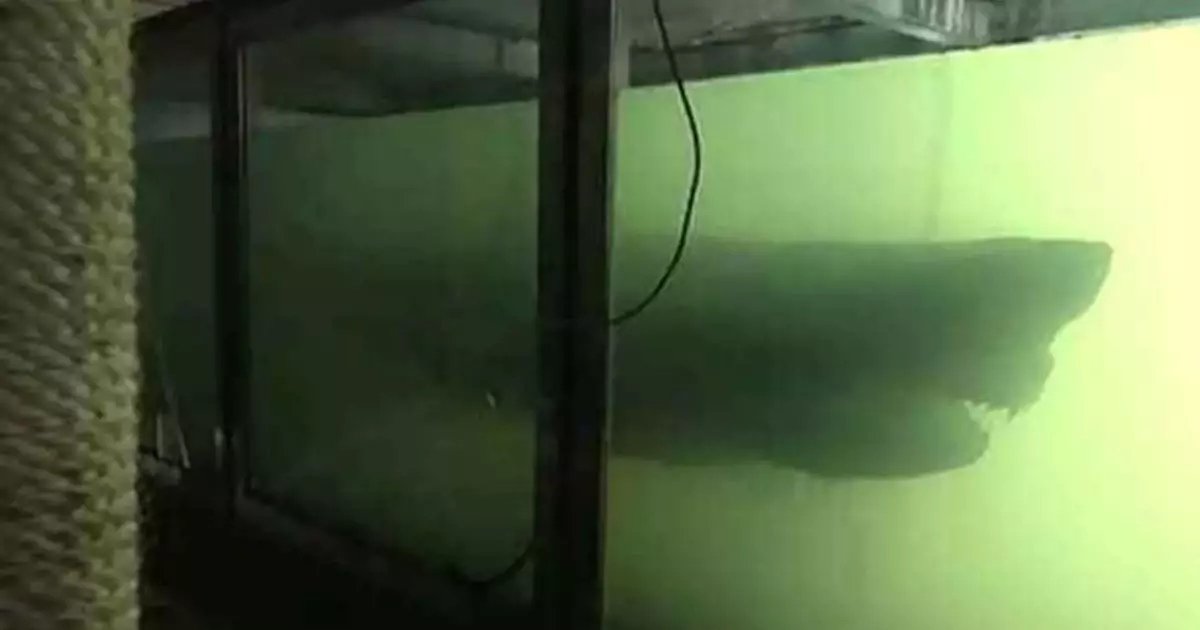12ft Great White Shark Carcass Found Intact in Creepy Abandoned Wildlife Park Six Years Later
Rosie the Great White Shark’s preserved carcass, found in an abandoned wildlife park, has sparked a mixture of curiosity, awe, and a unique insight into wildlife preservation and marine biology. This discovery not only sheds light on the life and preservation of one of the ocean’s most formidable predators but also raises questions about the circumstances that led to such an unusual exhibit in a now-deserted setting. This blog explores Rosie’s story, the history of the wildlife park where she was found, and the broader implications for marine conservation and public education.
Background on Rosie the Great White Shark
Rosie the Great White Shark was once a living symbol of the ocean’s complexity and danger. Captured in the late 1990s, she was initially intended to be a star attraction at an Australian wildlife park. Measuring over 5 meters in length, her impressive size and fierce appearance made her an ideal candidate for public display.
However, after her death in the early 2000s, Rosie was preserved in a formaldehyde solution within a large tank. Her preservation was meant to ensure that she could continue to educate and intrigue park visitors for years to come. The wildlife park eventually closed down, but Rosie remained, suspended eerily in her tank, forgotten until rediscovery by urban explorers in 2018. Today, images of Rosie’s tank, murky with time and neglect, have circulated widely, turning her into a macabre internet sensation.
The Abandoned Wildlife Park
The wildlife park that became Rosie’s unintended mausoleum was once a bustling educational facility, dedicated to the display and study of native and exotic wildlife. Founded in the 1980s, the park aimed to provide visitors with close encounters with various animal species, promoting conservation and wildlife appreciation.
Economic downturns, shifts in public attitudes towards animal captivity, and management failures led to the decline and eventual abandonment of the park around the mid-2000s. Today, the park is a shadow of its former self, with overgrown enclosures and decaying facilities that offer a haunting reminder of its past.
The Process and Science of Preservation
Rosie’s preservation involved embalming her body in a formaldehyde solution, a common method for maintaining biological specimens. This process prevents decay by cross-linking the proteins in biological tissues, effectively halting bacterial and fungal activity that would otherwise decompose the body.

The scientific significance of this preservation extends beyond Rosie’s individual story. It serves as a case study in the effectiveness of chemical preservation techniques, providing researchers and educators with a real-world example of how large marine animals can be maintained for long-term study and display. Rosie’s case also prompts discussions about modern techniques, such as plastination, which might offer more sustainable and visually appealing preservation solutions.
Environmental and Conservation Implications
The discovery of Rosie in such a state highlights significant points regarding marine conservation. It serves as a stark, visible reminder of the mortality of even the most formidable marine creatures and the human impact on marine environments. Preserved specimens like Rosie can play a crucial role in education, helping to raise awareness about marine life and the importance of oceans in the global ecosystem.
Moreover, the ethical considerations of capturing and displaying wild animals, especially large predators like great white sharks, are increasingly scrutinized. Rosie’s story can help fuel discussions about the balance between educational value and the ethical treatment of wildlife.
Public and Cultural Impact
The story of Rosie the Great White Shark has captured the public’s imagination, showcasing the deep fascination with marine life and the mysteries it holds. This fascination is reflected in the media coverage and public reaction to images of Rosie’s preserved body, highlighting a cultural moment where wildlife conservation intersects with urban exploration and digital media sharing.
Artists and educators might find inspiration in Rosie’s story, using it as a basis for artworks, exhibitions, or discussions about the intersections of nature, science, and society. This can enhance public engagement with marine conservation issues, bringing attention to the need for preserving natural habitats and respecting wildlife.
Future of Rosie and Similar Exhibits
The future of Rosie’s exhibit is uncertain. Discussions have been sparked about potentially relocating her to a more suitable venue, like a museum, where her preservation can be properly maintained, and where she can continue to educate the public about marine biology and conservation.
Advances in preservation technology could enhance how we display and interpret marine specimens, ensuring they are preserved more effectively and ethically. This could lead to better conservation practices and more informative, respectful exhibits that honor the dignity of the creatures they display.
Rosie the Great White Shark’s story is more than just a curiosity; it is a poignant reminder of our responsibilities toward marine life and the environments they inhabit. Her preservation offers valuable lessons in biology, conservation, and the ethics of wildlife display. As we move forward, let her story inspire both awe and action—motivating further support for marine conservation efforts and a thoughtful consideration of how we interact with our world’s mysterious and magnificent marine inhabitants.


